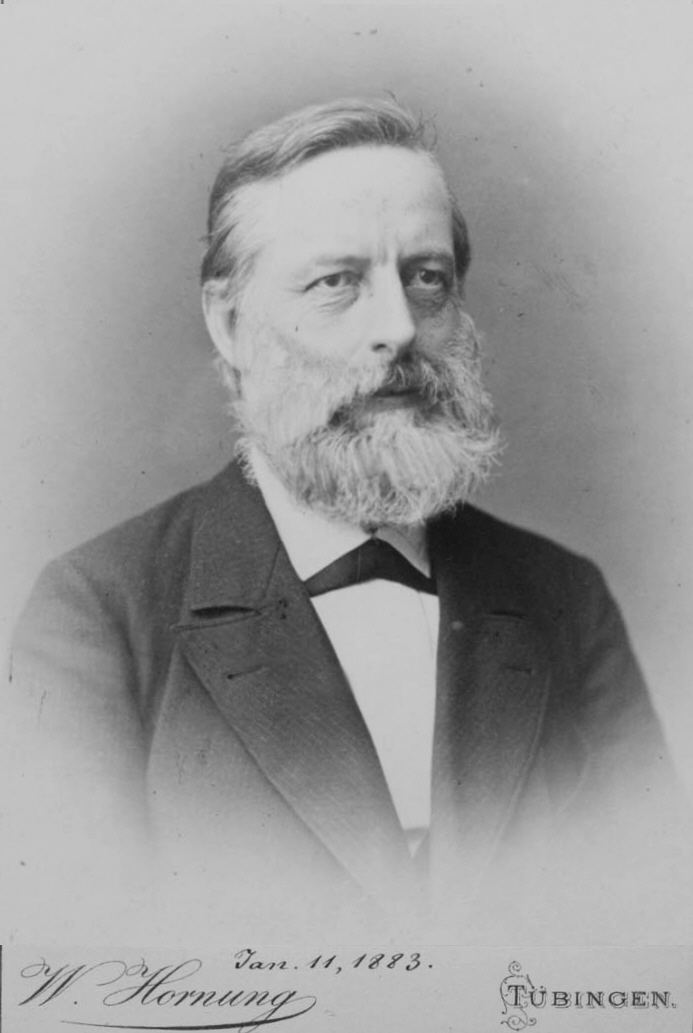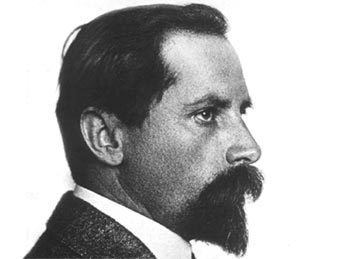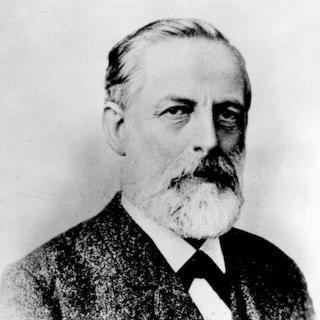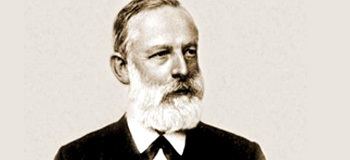Ex-spouse Johanna Volkmann Name Julius Meyer | ||
 | ||
Died April 11, 1895, Tubingen, Germany Parents Anna Biermann, Friedrich August Meyer | ||
Institutions University of Tubingen Similar John Newlands (chemist) , Dmitri Mendeleev , Henry Moseley | ||
TIME TRAVEL: The Contribution of Julius Lothar Meyer to the Periodic Table
TemporalVision: Julius Lothar Meyer
Julius Lothar Meyer (19 August 1830 – 11 April 1895) was a German chemist. He was one of the pioneers in developing the first Periodic table of chemical elements. Both Mendeleev and Meyer worked with Robert Bunsen. He never used his first given name, and was known throughout his life simply As Lothar Meyer.
Contents
- TIME TRAVEL The Contribution of Julius Lothar Meyer to the Periodic Table
- TemporalVision Julius Lothar Meyer
- Career
- Periodic table
- Personal life
- References

Career

Lothar Meyer was born in Varel,Germany (then part of the Duchy of Oldenburg). He was the son of Friedrich August Meyer, a physician, and Anna Biermann. After attending the Altes Gymnasium in Oldenburg, he studied medicine at the University of Zurich in 1851. Two years later, he studied at the University of Würzburg, where he studied pathology, as a student of Rudolf Virchow. He studied under Carl Ludwig in Zurich, which prompted him to devote his attention to physiological chemistry. After taking his M.D. degree from Würzburg in 1854, he went to Heidelberg, where Robert Bunsen held the chair of chemistry. In 1858, he graduated with a Ph.D. with a thesis on the action of carbon monoxide on the blood. With this interest in the physiology of respiration, he had recognized that oxygen combines with the hemoglobin in blood.

Influenced by the mathematical teaching of Gustav Kirchhoff, he took up the study of mathematical physics at Königsberg under Franz Ernst Neumann, and in 1859 he became Privatdozent in physics and chemistry at the University of Breslau. In 1866, Meyer accepted a post at the Eberswalde Forestry Academy at Neustadt-Eberswalde but two years later was appointed to a professorship at the Karlsruhe Polytechnic.

In 1872, Meyer was the first to suggest that the six carbon atoms in the benzene ring (that had been proposed a few years earlier by August Kekulé) were interconnected by single bonds only, the fourth valence of each carbon atom being directed toward the interior of the ring.

During the Franco-German campaign, the Polytechnic was used as a hospital, and Meyer took an active role in the care of the wounded. In 1876, Meyer became Professor of Chemistry at the University of Tübingen, where he served until his death.
Periodic table

Meyer is best known for his part in the periodic classification of the elements. He noted, as J. A. R. Newlands did in England, if each element is arranged in the order of their atomic weights, they fall into groups of similar chemical and physical properties repeated at periodic intervals. According to him, if the atomic weights were plotted as ordinates and the atomic volumes as abscissae—the curve obtained a series of maxima and minima—the most electro-positive elements appearing at the peaks of the curve in the order of their atomic weights.
His book, Die modernen Theorien der Chemie, which he began writing in Breslau in 1862 and which was published two years later (The Internet Database of Periodic Tables. Hemogenesis web book), contained an early version of the periodic table containing 28 elements, classified elements into six families by their valence—for the first time, elements had been grouped according to their valence. Works on organizing the elements by atomic weight, until then had been stymied by inaccurate measurements of the atomic weights.
He published articles about classification table of the elements in horizontal form (1862, 1864) and vertical form (1870), in which the series of periods are properly ended by an element of the earth metal group.
In 1869, Dmitri Mendeleev published a periodic table of all known elements (he predicted several new elements to complete the table, and corrected some atomic weights). A few months later, Meyer published a revised and expanded version of his 1864 table independently, which was similar to that published by Mendeleev (Meyer had been sent a copy of Mendeleev'S table earlier; Mendeleev had sent it to many well-known chemists of his day) and a paper showing graphically the periodicity of the elements as a function of atomic weight. Meyer, as well as other chemists, was doubtful about Mendeleev's periodic law, and he criticized Mendeleev for "changing existing elements' atomic weights, only regarding possibility of periodical law in its structure". However, Mendeleev's work received significant support, when the new elements were found as predicted and atomic weights accordingly.
In 1882, both Meyer and Mendeleev received the Davy Medal from the Royal Society in recognition of their work on the Periodic Law.
Personal life
Meyer married Johanna Volkmann on 16 August 1866.
